
Hong Kong Journal of Radiology
Scope & Guideline
Empowering Radiology Through Open Access Innovation
Introduction
Aims and Scopes
- Clinical Radiology and Imaging Techniques:
The journal emphasizes clinical applications of radiological techniques, including diagnostic imaging and interventional procedures across various medical specialties. - Oncology and Molecular Imaging:
A significant focus is placed on the role of imaging in cancer diagnosis, treatment planning, and monitoring, including advancements in molecular imaging techniques such as PET/CT. - Multidisciplinary Approaches:
The journal highlights the importance of a multidisciplinary approach in radiology, integrating insights from pathology, surgery, and oncology to improve patient outcomes. - Pictorial Essays and Case Reports:
There is a consistent inclusion of pictorial essays and case reports that provide visual guidance and practical insights into complex radiological findings. - Technological Innovations:
Research on emerging technologies in radiology, such as advanced MRI techniques and AI applications in imaging, is a core area of interest.
Trending and Emerging
- Personalized Medicine and Targeted Imaging:
There is an increasing focus on the role of imaging in personalized medicine, particularly in tailoring treatment plans based on individual patient profiles and molecular characteristics. - Artificial Intelligence and Machine Learning in Imaging:
The integration of AI and machine learning technologies in radiology is gaining traction, with studies exploring their applications in image analysis and diagnostic accuracy. - Interventional Radiology Advances:
Research on minimally invasive procedures and the expanding role of interventional radiology, including case studies and technique innovations, is becoming more prominent. - Impact of COVID-19 on Radiology Practices:
The pandemic has led to a surge in research addressing the implications of COVID-19 on radiological practices, including diagnostic challenges and adaptations in imaging protocols. - Radiomics and Big Data Analytics:
Emerging interest in radiomics—the extraction of large amounts of quantitative features from medical images—and its applications in predictive modeling and outcome assessment is notable.
Declining or Waning
- Traditional Radiological Techniques:
There has been a noticeable decrease in papers focused solely on conventional radiological techniques, such as standard X-rays, as newer imaging modalities gain prominence. - Non-invasive Imaging of Rare Conditions:
Research on rare conditions that do not frequently occur in the general population has become less common, possibly due to a shift towards more prevalent and clinically relevant conditions. - Basic Radiological Methods and Protocols:
Papers detailing basic methods and standard operating procedures in radiology are appearing less frequently, as the field moves towards more advanced and specialized applications.
Similar Journals
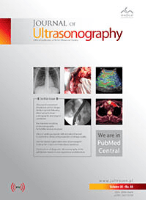
Journal of Ultrasonography
Fostering Collaboration in the Ultrasound CommunityJournal of Ultrasonography, published by SCIENDO, is a vital open-access platform for advancing knowledge and research in the fields of Radiology and Ultrasound Technology. Since its inception in 2013, this journal has provided a forum for practitioners and researchers to share innovative findings and critical insights, making it an essential resource for professionals in the medical imaging community. With an ISSN of 2084-8404 and an E-ISSN of 2451-070X, the journal aims to enhance clinical practice and foster academic growth through rigorous peer-reviewed publications. Notably, it has achieved a Q3 ranking in both Radiological and Ultrasound Technology and Radiology, Nuclear Medicine and Imaging, reflecting its commitment to quality and relevance. Based in Germany, it has also emerged as a significant contributor to the global discourse in medicine, currently ranked in the 39th percentile within its niche disciplines according to Scopus. The journal is uniquely positioned to serve as a conduit for innovative research, making it indispensable for researchers, healthcare practitioners, and students dedicated to the advancement of ultrasonography.
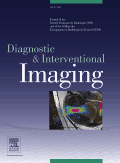
Diagnostic and Interventional Imaging
Exploring the Future of Radiology and Nuclear MedicineDiagnostic and Interventional Imaging, published by Elsevier Masson, stands as a prominent journal in the fields of Radiology, Nuclear Medicine, and Imaging. With a significant impact factor and a reputation for high-quality research, this journal is dedicated to advancing the understanding and application of diagnostic and interventional imaging techniques. It has achieved an impressive Q1 ranking across multiple categories including Medicine (miscellaneous) and Radiological and Ultrasound Technology, demonstrating its esteemed position within the academic community. The journal features cutting-edge studies and reviews, reflecting the latest innovations and practices from 2012 to 2024. Researchers, healthcare professionals, and students alike can look forward to accessing valuable insights that drive forward the discipline and improve patient outcomes, as evidenced by its robust Scopus rankings placing it among the top journals in its domain.
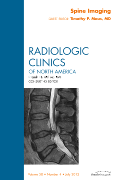
RADIOLOGIC CLINICS OF NORTH AMERICA
Shaping the Future of Radiology Through Insightful Research.Radiologic Clinics of North America, published by W B Saunders Co-Elsevier Inc, stands as a pivotal resource in the field of medical imaging and radiology. With a solid history dating back to 1963 and converging years extending to 2024, this journal has established itself as a reputable platform for original research, comprehensive reviews, and insightful discussions that advance the knowledge and practice of radiology, nuclear medicine, and imaging. Holding a Q2 classification in both the miscellaneous medicine and radiology categories and positioned within the 56th percentile among its peers, its contributions are vital for both academic research and clinical applications. Although it does not offer open access, the journal remains accessible through institutional subscriptions and is a must-read for researchers, healthcare professionals, and students keen on the latest developments in radiological practices. With a dedicated editorial board and a commitment to the highest academic standards, Radiologic Clinics of North America continues to shape the future of the medical imaging field.
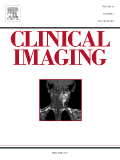
Clinical Imaging
Shaping Tomorrow's Imaging Techniques TodayClinical Imaging, published by Elsevier Science Inc, is a renowned journal dedicated to the field of radiology, nuclear medicine, and imaging. With an ISSN of 0899-7071 and an E-ISSN of 1873-4499, this esteemed publication has established its significance in advancing imaging science since its inception in 1989 and continues to make impactful contributions to the discipline through 2024. The journal holds a prestigious Q2 ranking in the category of Radiology, Nuclear Medicine, and Imaging, reflecting its critical role in bridging research and clinical practice. Currently ranked #113 out of 333 by Scopus, with a notable 66th percentile, it offers a platform for disseminating high-quality research, reviews, and case studies that inspire innovation and enhance imaging techniques. Although it primarily functions as a subscription-based journal, it remains dedicated to accessibility and the dissemination of pivotal findings that inform both academia and clinical settings. Clinical Imaging is essential for researchers, professionals, and students alike, offering insights that shape the future of diagnostic imaging.

European Radiology Experimental
Bridging Clinical Practice and Cutting-Edge ResearchEuropean Radiology Experimental is a premier open-access journal published by Springer Wien, dedicated to advancing the field of radiology through innovative research and experimentation. Since its establishment in 2017, the journal has quickly gained recognition, evidenced by its impressive Q1 ranking in the Radiology, Nuclear Medicine and Imaging category, and its placement within the top 83rd percentile of the Scopus rankings. Based in the United Kingdom, this journal aims to bridge the gap between clinical practice and cutting-edge research, providing a platform for rigorous peer-reviewed articles that explore new methodologies, technologies, and insights in radiological sciences. With a commitment to open access, European Radiology Experimental ensures that its content is readily accessible to a global audience, supporting the dissemination of knowledge and fostering collaborations among researchers, professionals, and students in the medical imaging community. As it progresses through its convergence years, the journal continues to play a vital role in shaping the future of radiological research and practice.

BJR Case Reports
Connecting professionals with pioneering case studies.BJR Case Reports is a prominent open access journal published by the British Institute of Radiology, dedicated to advancing the field of radiology through the dissemination of high-quality case reports. Since its establishment in 2016, the journal has aimed to provide a platform for sharing unique clinical findings, innovative techniques, and educational insights that enhance the understanding of imaging and its applications in patient care. With an ISSN of 2055-7159, the journal not only addresses the pressing needs of researchers and healthcare professionals but also nurtures the academic growth of students entering this critical field. Located in London, England, BJR Case Reports fosters a collaborative environment for radiologists worldwide, ensuring that groundbreaking cases are accessible through its open access format. This commitment to sharing knowledge not only elevates the standard of practice but also contributes significantly to the global discourse in radiological sciences.

European Journal of Radiology Open
Pioneering Open Access in Radiological ResearchThe European Journal of Radiology Open, published by Elsevier, has established itself as a pivotal platform for disseminating high-quality research in the field of radiology, nuclear medicine, and imaging since its inception in 2014. This open access journal, holding a commendable Q2 ranking in the esteemed 2023 Scopus categorization, seeks to foster a collaborative environment where researchers, professionals, and students can share innovative findings and advancements. Operating under the E-ISSN 2352-0477, this journal contributes to the broader scientific discourse with a commitment to accessibility and transparency, ensuring that cutting-edge research is available to a global audience. The journal's dual focus on rigorous peer review and rapid publication processes underscores its importance within the academic community, aiming to empower professionals with the latest insights in the dynamic landscape of medical imaging.

EUROPEAN JOURNAL OF RADIOLOGY
Exploring the Frontiers of Medical ImagingThe European Journal of Radiology, published by Elsevier Ireland Ltd, is a premier peer-reviewed journal in the fields of radiology, nuclear medicine, and imaging. Established in 1981, it has carved a significant niche within the academic community, showcasing innovative research that enhances medical imaging practices and improves patient care. With an impressive ranking in the Q1 category for both Medicine (miscellaneous) and Radiology, Nuclear Medicine, and Imaging in 2023, the journal is recognized globally for its commitment to advancing scientific knowledge and improving imaging methodologies. The journal's Scopus ranking of #60/333, placing it in the 82nd percentile, underlines its reputation for high-quality research and scholarly contributions. While traditionally a subscription-based journal, it continually evolves to meet the demands of the academic landscape, aiming to bridge the gap between research and clinical practice. Researchers, healthcare professionals, and students alike can benefit from exploring its extensive archives and current publications, which are curated to foster education and innovation in the medical imaging domain.
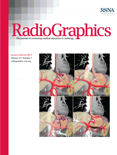
RADIOGRAPHICS
Exploring Innovations in Radiological ExcellenceRADIOGRAPHICS, published by the Radiological Society of North America (RSNA), is a premier academic journal dedicated to the field of radiology, nuclear medicine, and imaging. With an impressive impact factor and recognition in the top quartile (Q1) of both Medicine (miscellaneous) and Radiology, Nuclear Medicine and Imaging categories, RADIOGRAPHICS stands out as a leading platform for disseminating high-quality research and clinical findings. Since its inception in 1985 and projected to run until 2024, the journal has consistently provided essential insights into cutting-edge imaging techniques and advancements in radiological practices, making it invaluable for professionals, researchers, and students alike. Although it does not offer open access, the journal continues to flourish with a robust reputation, ranked 35th in its field according to Scopus, placing it within the 89th percentile of its category. With an unwavering commitment to enhancing the understanding and application of radiological sciences, RADIOGRAPHICS remains a pivotal resource for advancing knowledge and expertise within the medical community.
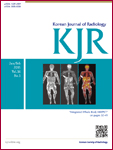
KOREAN JOURNAL OF RADIOLOGY
Advancing Imaging Excellence in RadiologyKorean Journal of Radiology (ISSN: 1229-6929, E-ISSN: 2005-8330), published by the Korean Society of Radiology, stands as a leading international platform for the dissemination of high-quality research and advancements in the fields of radiology, nuclear medicine, and imaging. With a remarkable impact factor and ranked in the Q1 quadrant in its category, this journal showcases cutting-edge studies, clinical investigations, and comprehensive reviews that significantly contribute to the understanding and practice of medical imaging. Researchers, clinicians, and students alike will find the journal an invaluable resource, featuring innovative methodologies, case studies, and essential updates in imaging technology. Since its inception in 2000 and continuing through 2024, the Korean Journal of Radiology remains dedicated to promoting excellence and fostering collaborative research within the global radiology community, underscoring the importance of imaging in modern medicine.